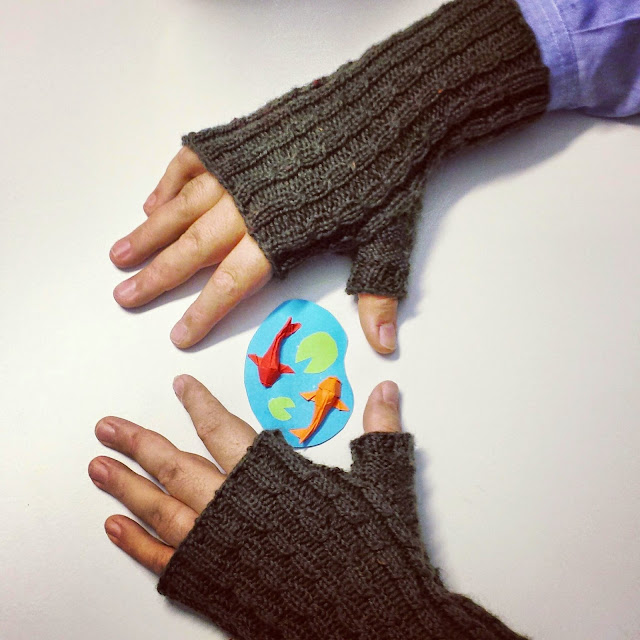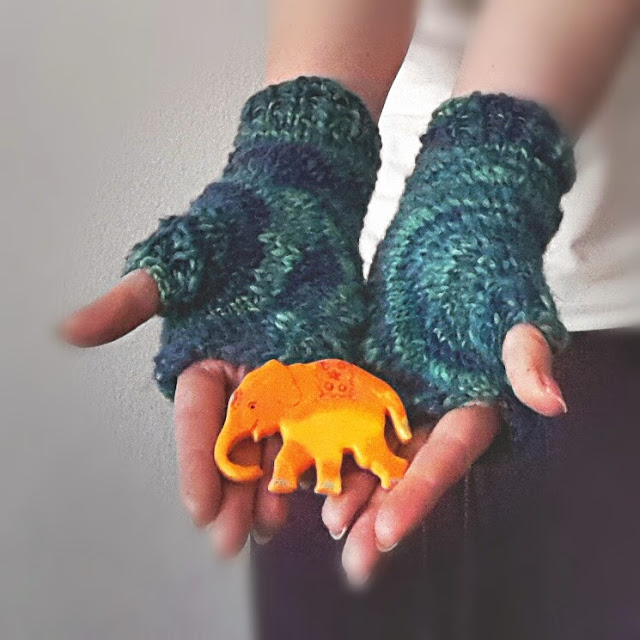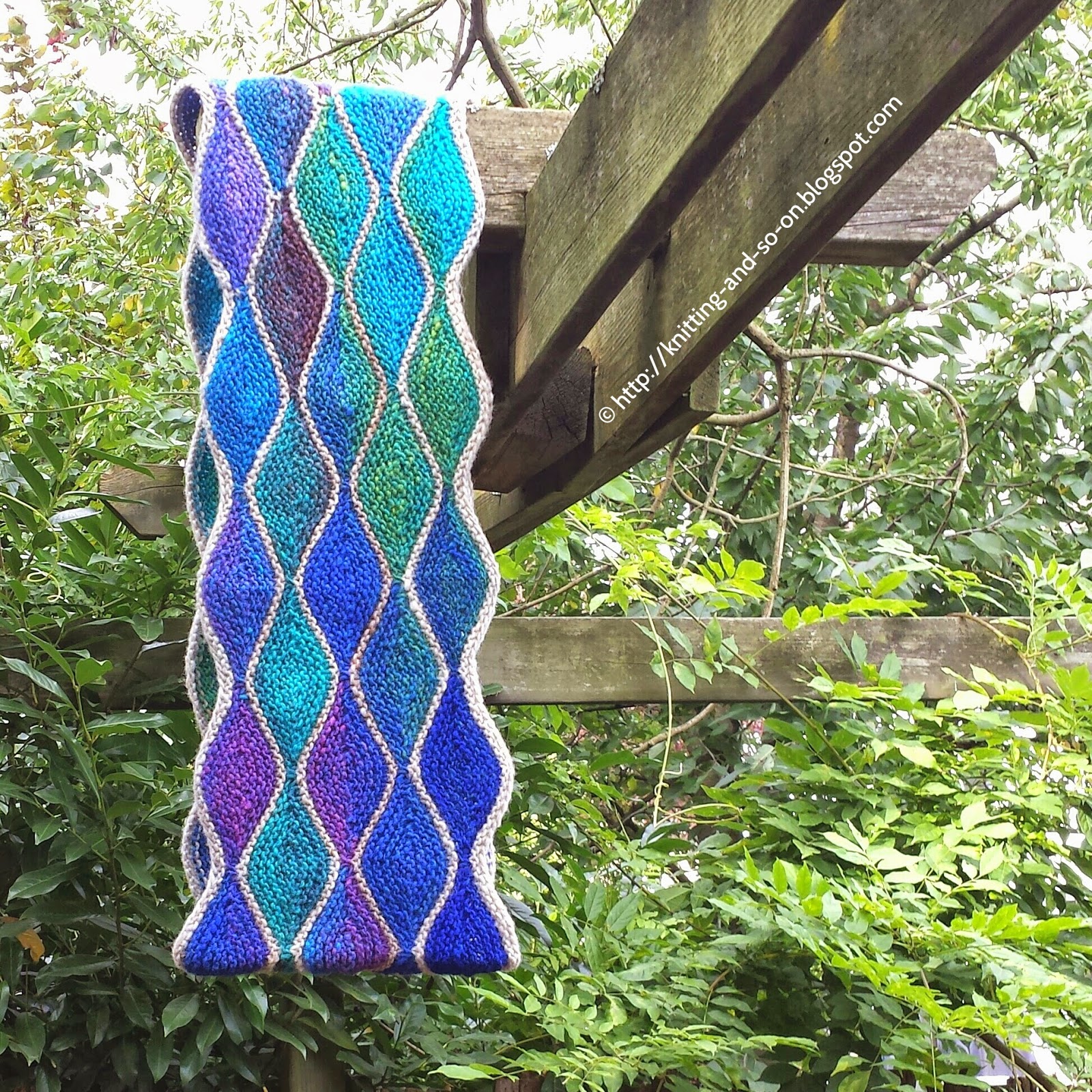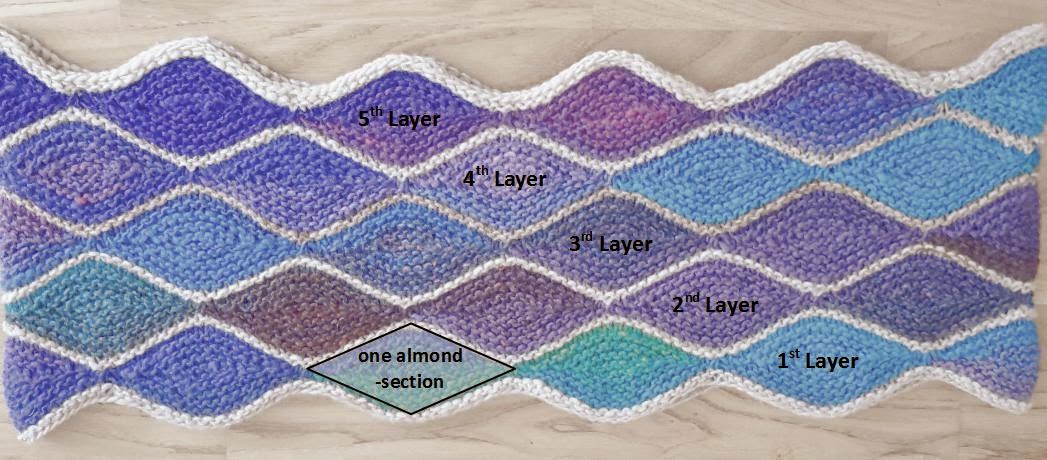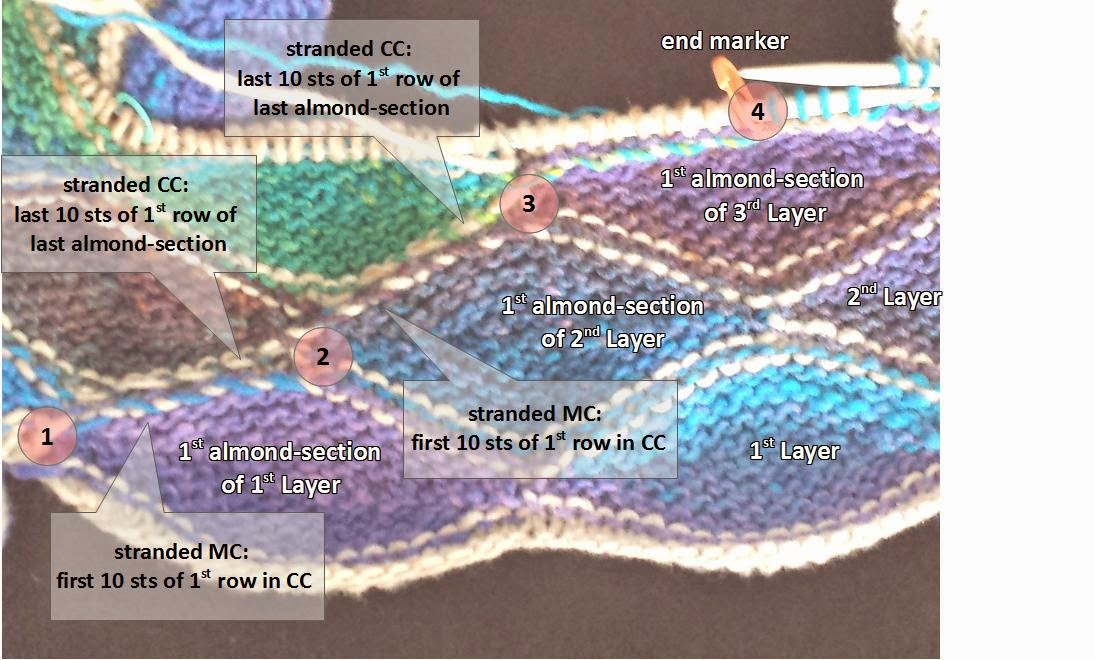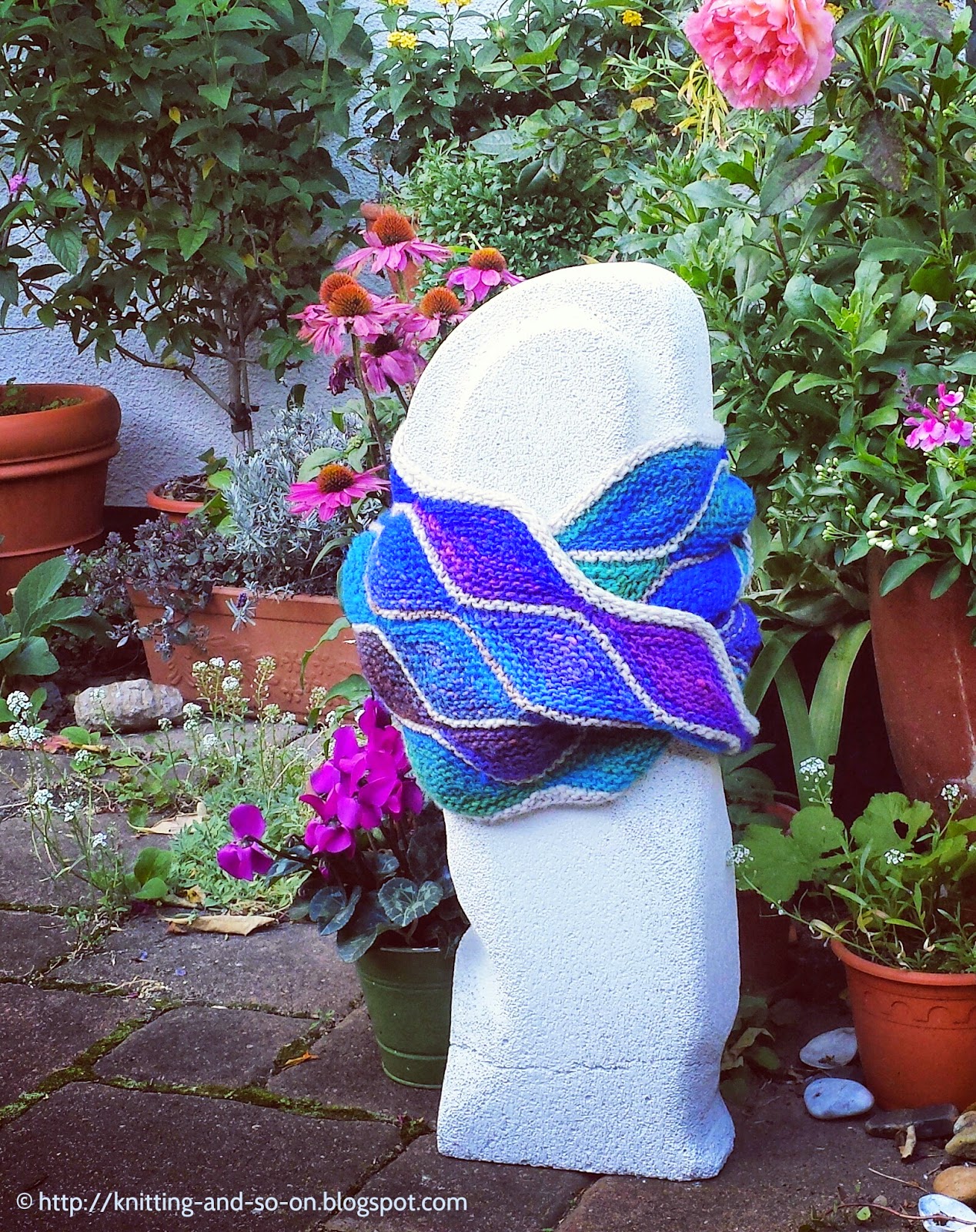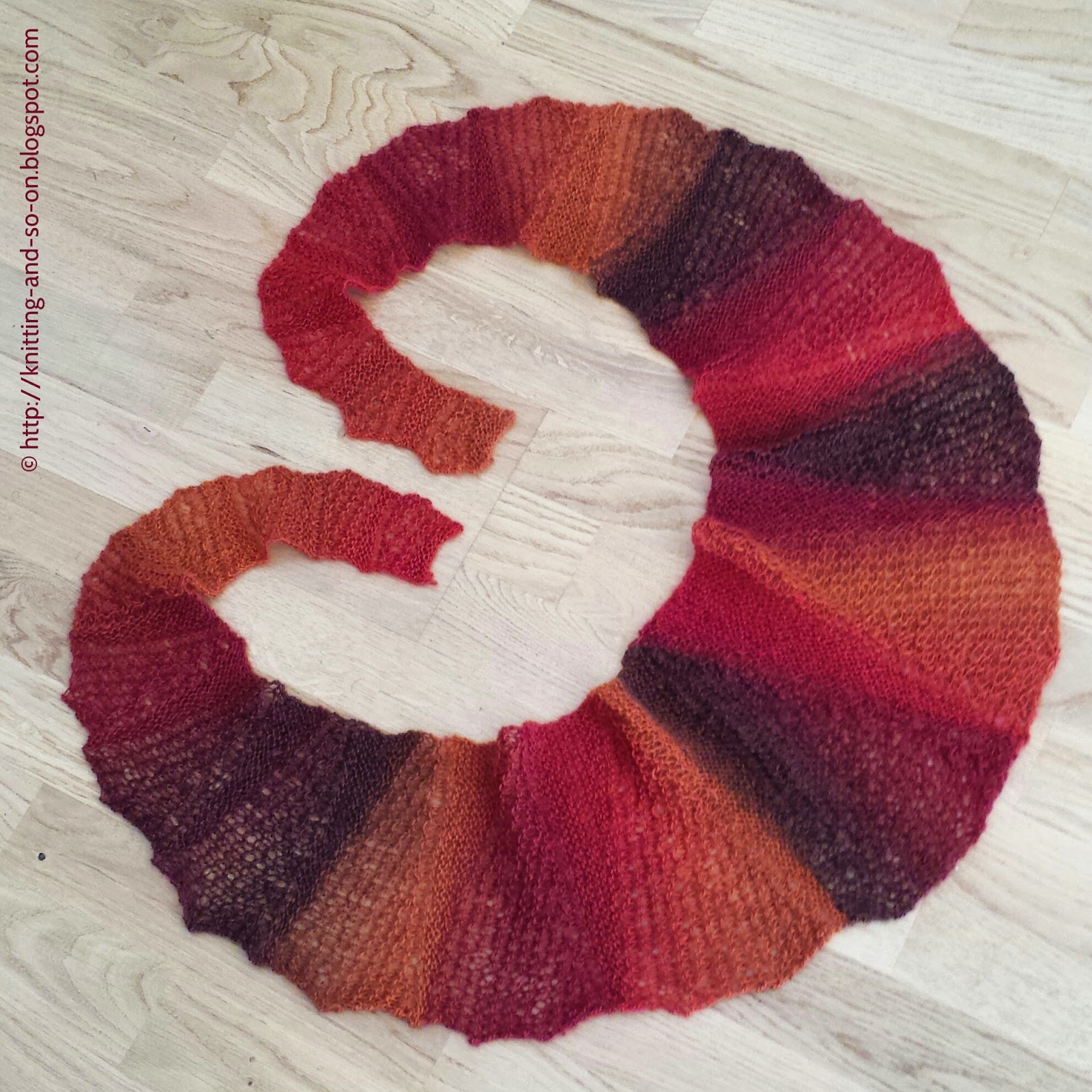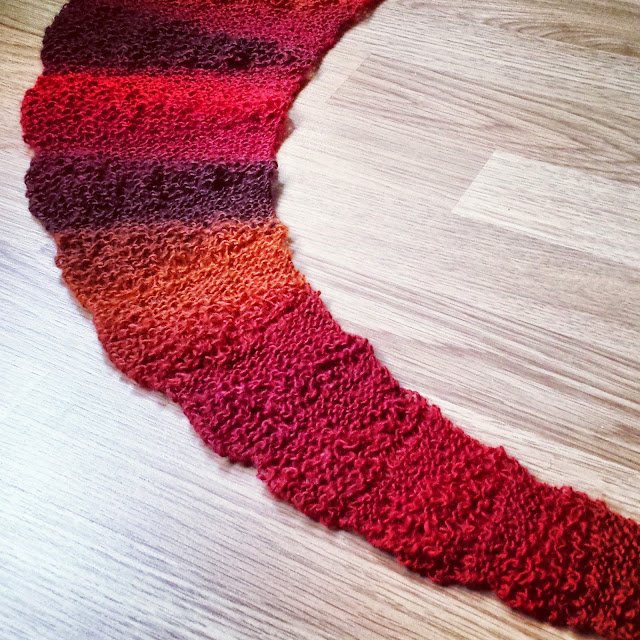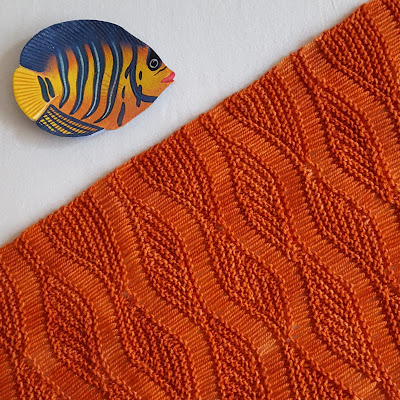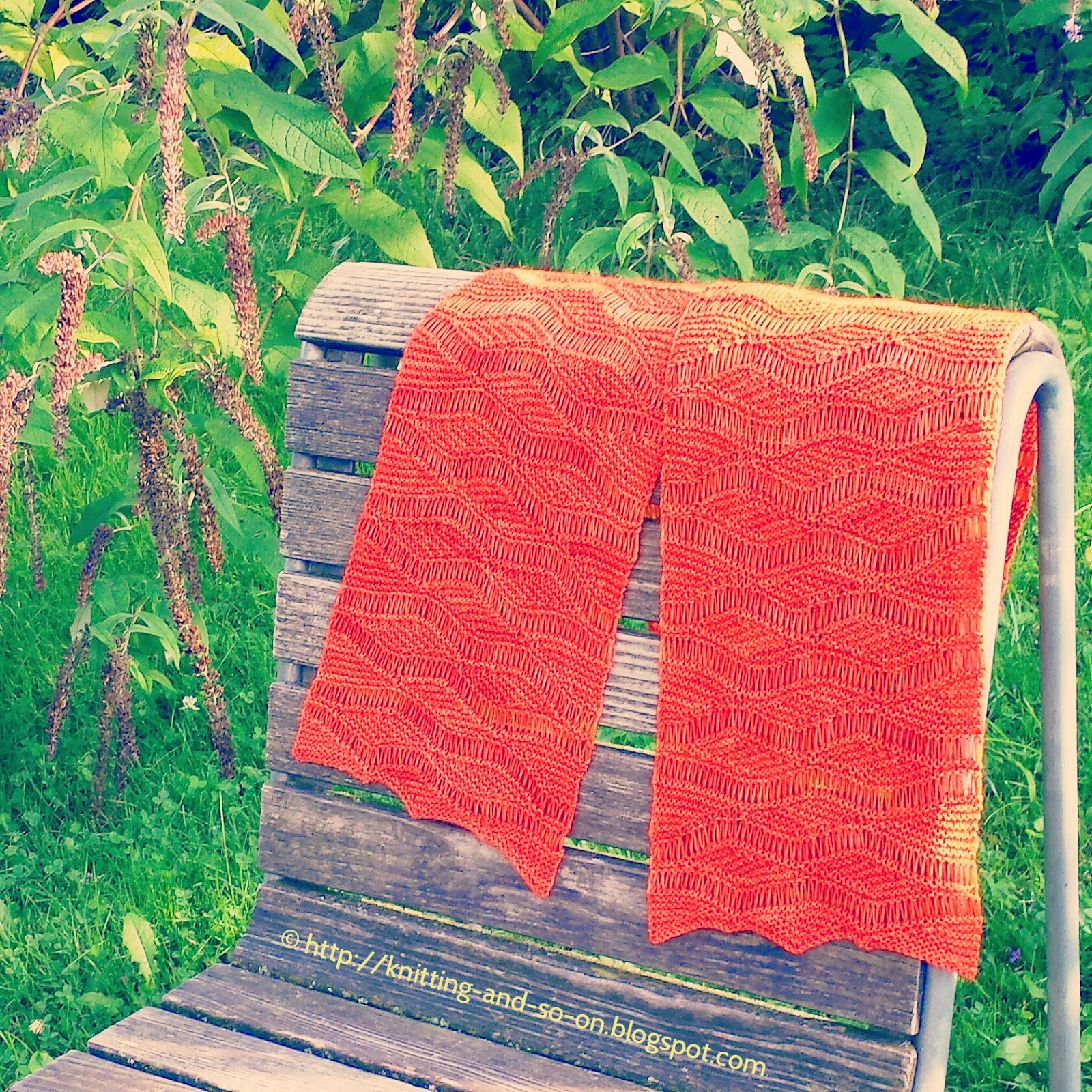 Sometimes when external contractors have to do stuff in one of the high-security rooms of a data centre, my colleagues have to chaperone them. These rooms tend to be well air-conditioned, i.e. it gets cold after a while.
Sometimes when external contractors have to do stuff in one of the high-security rooms of a data centre, my colleagues have to chaperone them. These rooms tend to be well air-conditioned, i.e. it gets cold after a while.That’s why, a few weeks ago I received a “distress call” via chat from a work mate – to please bring him fingerless gloves the next day. He had been sitting and freezing there for a whole day and didn’t want to repeat that experience unprotected. When I looked through all the fingerless gloves in my wardrobe (many), I noticed that they were all made for women’s hands – and too slim to fit over male hands. Furthermore, many of my designs are rather feminine … So, I brought him my widest ones but promised to knit him a new pair – more suitable for his hands and less girly. A week later his own special pair was ready. Here they are - the data centre mitts :)


This work by Knitting and so on is licensed under a Creative Commons Attribution-NonCommercial-ShareAlike 4.0 International License.
Materials
- 70 grams of 6-ply yarn
- 3.5 mm dpns
- 2 stitch markers
- Stitch holder or scrap yarn
- Tapestry needle to weave in ends
Abbreviations & Special Techniques
- mk1p: make 1 purl stitch (as shown in this video, the first two ways are OK for this pattern)
- C2B: cable 2 back, e.g. like shown in the this video. For me (unlike for the lady who provided the video, C2B is easier to do than C2F - choose for yourself but use the same stitch throughout the pattern :)
- pm: place marker
- sm: slip marker
- Backwards loop cast-on: shown in this video
- Pick up and knit: shown in this video
Instructions
CO56 sts and join in round
Knit 6 rounds of ribbing: *p2 k2 repeat from * to end of round
Start with cable pattern
Round 1 and 2: *p2 k2 repeat from * to end of round
Round 3: *p2 k2 p2 C2F repeat from * to end of round
Round 4-5: *p2 k2 repeat from * to end of round
Round 6: *p2 C2F p2 k2 repeat from * to end of round
Knit rounds 1-6 a total of 5 times and start thumb gusset
Thumb gusset and upper part of mitt
(Thumb increases are knitted every 2nd round while the pattern of cabling once per 3 rounds is kept.)
Round 1: p2 k2 p2 k2, p1, pm mk1p pm, p1, k2, *p2 k2 repeat from * to end of round
Round 2: p2 k2 p2 k2, p1, sm, p to next marker, sm, p1, *p2 k2 repeat from * to end of round
Round 3: p2 k2 p2 C2F, p1, sm, mk1p, p to 1 st before next marker, mk1p, sm, p1 k2 *p2 k2 p2 C2F repeat from * to end of round
Round 4: p2 k2 p2 k2, p1, sm , p to next marker, sm, p1, *p2 k2 repeat from * to end of round
Round 5: p2 k2 p2 k2, p1,sm, mk1p, p to 1 st before next marker, mk1p, sm, p1, *p2 k2 repeat from * to end of round
Round 6: p2 C2F p2 k2 p1, sm , p to next marker, sm, p1, k2 *p2 k2 p2 C2F repeat from * to end of round
Round 7: p2 k2 p2 k2, p1,sm, mk1p, p to 1 st before next marker, mk1p, sm, p1, *p2 k2 repeat from * to end of round
Round 8: p2 k2 p2 k2, p1, sm, p to next marker, sm, p1, *p2 k2 repeat from * to end of round
Round 9: p2 k2 p2 C2F, sm, mk1p, p to 1 st before next marker, mk1p, sm, p1 k2 *p2 k2 p2 C2F repeat from * to end of round
Round 10: p2 k2 p2 k2, p1, sm, p to next marker, sm, p1, *p2 k2 repeat from * to end of round
Round 11: p2 k2 p2 k2, p1,sm, mk1p, p to 1 st before next marker, mk1p, sm, p1, *p2 k2 repeat from * to end of round
Round 12: p2 C2F p2 k2 p1, sm , p to next marker, sm, p1, k2 *p2 k2 p2 C2F repeat from * to end of round
Round 13: p2 k2 p2 k2, p1,sm, mk1p, p to 1 st before next marker, mk1p, sm, p1, *p2 k2 repeat from * to end of round
Round 14: p2 k2 p2 k2, p1, sm, p to next marker, sm, p1, *p2 k2 repeat from * to end of round
Round 15: p2 k2 p2 C2F, sm, mk1p, p to 1 st before next marker, mk1p, sm, p1 k2 *p2 k2 p2 C2F repeat from * to end of round
Round 16: p2 k2 p2 k2, p1, sm, p to next marker, sm, p1, *p2 k2 repeat from * to end of round
Round 17: p2 k2 p2 k2, put the next 17 stitches on a stitch holder or on scrap yarn (removing the markers), CO2 (with backwards loop cast-on), *p2 k2 repeat from * to end of round
Round 18: *p2 C2F p2 k2 repeat from * to end of round
Rounds 19 and 20: *p2 k2 repeat from * to end of round
Round 21: *p2 C2F p2 k2 repeat from * to end of round
Round 22 and 23: *p2 k2 repeat from * to end of round
Round 24: *p2 k2 p2 C2F repeat from * to end of round
Round 25 and 26: 4-5: *p2 k2 repeat from * to end of round
Round 27: *p2 C2F p2 k2 repeat from * to end of round
Knit 6 rounds of ribbing: *p2 k2 repeat from * to end of round
Bind-off loosely.
Thumb
Remove 17 thumb stitches from stitch holder and distribute them on 2 dpns. From the sides and above the thumb hole pick up and knit 5 stitches. with a third needle. (There are now 22 sts on your needles, the next needle to knit is the first one with the stitches from the stitch holder)
Row 1: p16 p2tog p3 p2tog (the p2togs are to close the gap between the stitches from above the thumb with the thumb gusset stitches - the last p2tog connects the last stitch of the first row with the first stitch of the next row - now there are only 20 stitches on your needles)
Rows 2-4: purl
Rows 5-8: *p1 k2 p1 repeat from * to end of round
Bind off loosely in pattern
Row 1: p16 p2tog p3 p2tog (the p2togs are to close the gap between the stitches from above the thumb with the thumb gusset stitches - the last p2tog connects the last stitch of the first row with the first stitch of the next row - now there are only 20 stitches on your needles)
Rows 2-4: purl
Rows 5-8: *p1 k2 p1 repeat from * to end of round
Bind off loosely in pattern
Weave in ends.
Make two.

